#cesars like super haunted too
Note
Starling Desmond? Those guys are wild, especially when they start mimicking machines and people talking.
They’re super pretty too. Look at that metallic shine.
Also… here’s a video of a starling mimicking a human voice, making R2D2 sounds, making kissy-kissy noises and whistling.
youtube
Desmond would definitely use it to his advantage. He has the ability to mimic a human’s voice with the memories of multiple languages.
Which means…
He can pretend to be haunting Templars.
At that point, they wouldn’t even think that a bird was the source of all those voices.
And even if they see Desmond talk, they would assume he’s possessed.
Oh.
And I suppose he can also talk to his ancestors while he’s at it. XD
Desmond might get the ‘title’ of Devil Bird from the Templars while his ancestors just call him “Desmond, the talking bird”.
I feel like, in this case, we should give Desmond a handicap. He can’t speak long sentences, only short ones. But that’s enough to converse with his ancestors and scare the shit out of the Templars.
Desmond also only speak to his ancestors when he’s sure they’re alone or with someone they trust (ex: Malik and Kadar, the Auditores, …… Achilles later on)
There’s an inhuman quality to Desmond’s voice which he milks immediately. He tells the Templars their deepest secrets (Al Mualim) or prey upon their insecurities and weaknesses (Cesare).
To his ancestors? His voice takes a higher more birdsong tune and his ancestors actually believe the ‘Devil Bird’ is another bird altogether that has the same capability as Desmond, probably corrupted by the Apple.
It took them hearing Desmond intimidate Templars using that voice to understand that, yes, it was really their adorable companion making Templars fear the unknown.
(Leonardo absolutely loves him and sketches him a lot, adding him to his works whenever possible. In the future, the Starling would be seen as Leonardo’s favorite bird and a symbol of the arts. Florence might even try to make it the national bird because of Leonardo)
#desmond is turned into an animal subgenre#desmond is turned into a creature subgenre#desmond as a starling#he’s just a sweet bird to his ancestors#the devil bird to the templars#… and abbas XD#assassin's creed#desmond miles#altaïr ibn la'ahad#ezio auditore#ratonhnhaké:ton#connor kenway#teecup writes/has a plot#fic idea: assassin's creed#ask and answer
145 notes
·
View notes
Text
Opera videos that are 10/10 to me
Some recordings I've seen that I personally think are perfect and amazing, listed for your convenience, in chronological order. I have posted about most of these before and probably will again.
Händel, Giulio Cesare in Egitto (1724), Glyndebourne 2005
The opera: It's Julius Caesar in Egypt. Someone loses his head, Cleopatra seduces a guy, her brother is king but not very good at it. This opera is 4 hours long and a lot of stuff happens.
The video: Beautiful choreographies, strange meditations on British colonialism and gender, great costumes too. Lots of stage blood.
Notable singers: Danielle De Niese, Christophe Dumaux
Official link: Glyndebourne Encore, there's also a low res version on medici.tv, there's also a 2013 revival on Met on Demand.
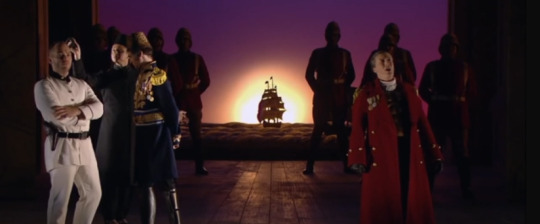

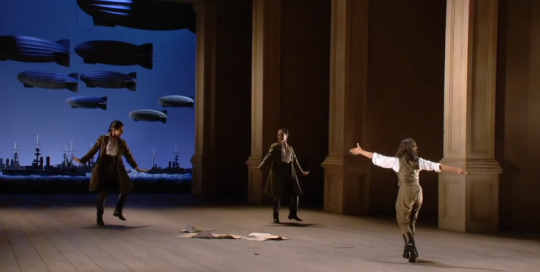
Mozart, Don Giovanni (1787), Festival Aix-en-Provence 2017
The opera: The bad man gets punished. It's Don Juan.
The video: A minimalist, "Brechtian" production. The acting is excellent, the costumes and gestures are very effective, everyone involved is super hot. The camerawork is the best I've seen.
Notable singers: Nahuel di Pierro, Isabel Leonard
Official link: medici.tv, it used to be on Youtube but alas.

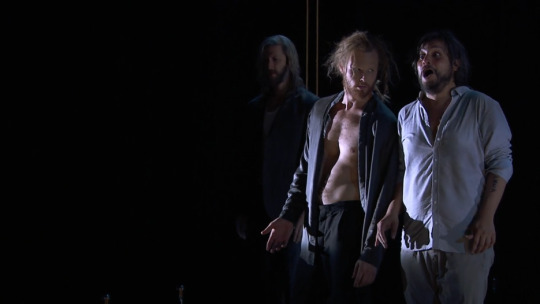
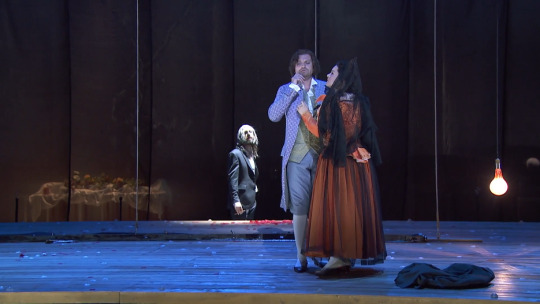
Rossini, Le Comte Ory (1828), Metropolitan Opera 2011
The opera: It's a fun farce about a youth who tries to seduce a countess and ends up in a threesome. Peak Rossini.
The video: A very Disney-esque production with simple sets and fairytale costumes, excellent acting, wonderful all around.
Notable singers: Juan Diego Florez, Diana Damrau, Michele Pertusi, Stephane Degout, Joyce DiDonato (yes, all of them)
Official link: Met Opera on Demand
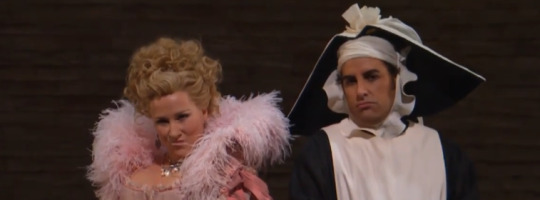
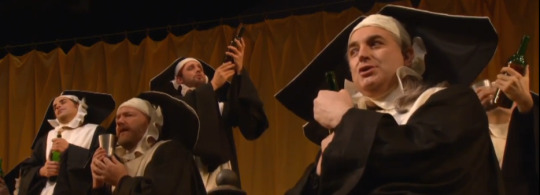
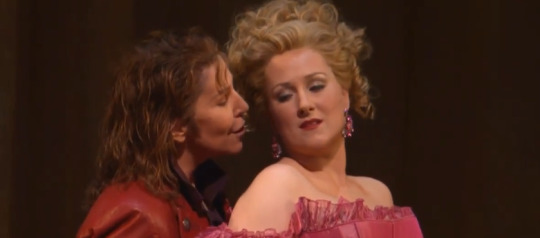
Gounod, Faust (1859), Metropolitan Opera 2011
The opera: A very simplified version of Goethe's tragedy Faust, a scholar makes a deal with the devil, seduces a girl, then regrets it.
The video: Instead of a 16th century devil, the seducer here is 20th century science. Basically Faust is a scientist who works for the military, his work haunts him and kills everyone he loves. The video itself is serviceable, I just really like the concept.
Notable singers: Jonas Kaufmann, Rene Pape
Official link: Met Opera on Demand

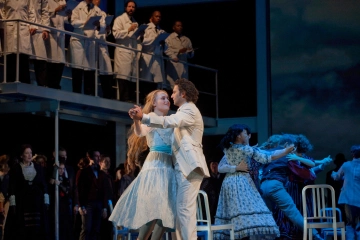
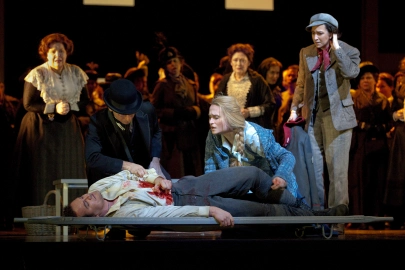
Verdi, Don Carlos (1867), Paris 1996
The opera: Based on Schiller's tragedy Don Carlos, it's about a crown prince who is very bad at his job and in love triangles with literally every other character. Heart-rendingly sad. I love it.
The video: This is pure eye candy, everything is unbelievably aesthetic and well shot, the gestures are fantastic, there's a lot of stage blood at one point. Mildly 90s camp but in a good way.
Notable singers: Thomas Hampson, Roberto Alagna, Waltraud Meier
Official link: medici.tv
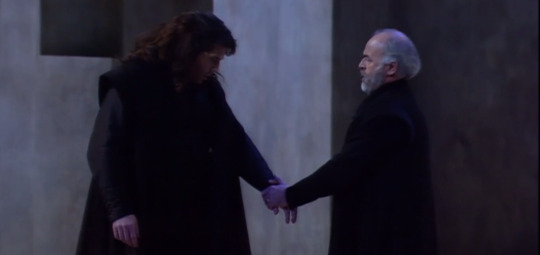


* Mostly based on whether I think the opera and production and video (and audio) are good. Very much my personal taste; I'm not an expert. I'm linking to official (paid) ways to watch them, all of them can also be found on the internet in various places, but the subtitle situation might be dire. Enjoy responsibly.
#giulio cesare#don giovanni#dg aix 2017#le comte ory#gounod faust#verdi don c#recommending things#because people asked
16 notes
·
View notes
Text
y'all mind if i (spills unfiltered au thoughts all over the floor)
au where mark is a ghost who attaches himself to thatcher when he comes to check on mark after the school calls. mostly bc thatcher is the first real person he's seen in days, but he's conflicted bc (deranged hissing) c o p.
he sticks around just so he can knock thatcher's pens off his desk. maybe he starts fucking with the lights and doors and powerpoint presentations during meetings. generally just causing small problems on purpose
mayb one day he gets pissed off enough tht he throws smth bigger across the room & now every cop is staring at him horrified & o shit, he's visible now. he fades away back 2 intangible after a moment bc he surprised himself out of his own fit of anger & it's funny to watch the police panic thinking there's an alt. but thatcher is still like staring @ the spot where he was like he saw a ghost (ha) bc thatcher's the one who found his body & he knows who that is
n in the following days every time a pen gets swatted off his desk if he squints hard enough he can vaguely see the outline of a person. so he's being haunted by a dead kid he failed to protect, which is great and not at all soul crushing and miserable :)
maybe eventually he just like. buys a ouija board and after a solid hour of mark flinging the planchette around with reckless abandon out of sheer pettiness they finally have a conversation
somehow this leads to thatcher going to cesar's house? i guess? bc he's investigating the alternates or w/e and hey. no better place to get leads than a literal victim as awful as that sounds
cesar is a poltergeist in his house, raging bc his mom died :( + he got got + the alt is going after mark next!!! maybe doesn't realize he's already dead? or not fully lucid, anyway. he's definitely at least a little fucked up bc the alternate stealing his face
thatcher almost gets his shit folded by a delirious ghost but eventually mark is able to get cesar to calm down a little & he goes and wails in the corner bc mark is dead :( & thatcher is just awkwardly there w/ scratch marks like. this is fine
n then he can get the security cam footage n everything and mark is ghost depressed and not throwing thatcher's pens across the room with as much enthusiasm
when thatcher & ruth are in th house responding to the "home invasion" together thatcher doesn't notice the alternate silently trying to merc ruth behind him but mark definitely does and he just starts throwing shit and making as much noise as possible & gets both ruth and thatcher's attention. so ruth lives which is fun :) she's traumatized but that's ok everyone in mandela county is
poltergeist ces somehow tracking thatcher down & he's just losing his shit b4 mark and thatch realize he's trying to tell them something but is generall just too Generally Fucked Up to communicate well & it takes a few false starts w the ouija board for him to tell thatcher that there are two teens at his alternate infested house and one of them has gone into the basement, which is a VERY bad idea
jonah's spirit is in the car he and adam stole & he's just not having a good time. thatcher finds him first and takes a sec to investigate bc he's gotta and ends up w a wailing ghost attached to his sleeve just kinda screamin abt how he left someone named adam behind and thatcher has to help him
adam is injured and traumatized, but still mostly alive, which is great. jonah chills out a lil but is still kinda inconsolable. adam can see the ghosts bc he had a close call there & is just staring @ mark bc dude. how r u a l i v e rn. he's super not alive he's a ghost
that's all the thoughts i have so far ok bye
#words4saturn#thatcher sees dead people#i just have a lot of thoughts ok#i might draw this#or maybe write it#idk what i'm gonna do but i'm gonna do something!!!!!!!!#long post btw#i had a lot of shit to type jkhsdkjds#the mandela catalogue
20 notes
·
View notes
Text
⭐️Finally Got around to watching JoJo’s Bizzare Adventure...
Oooooookay so I’ve been watching Jojo for a couple of days, I’m barely up to Stardust Crusade ep.3, and I have to say my opinion has done quite a turnaround. The first time I started it I was kind of put off by it because Dio was such an asshole. He burned Danny alive for fuck sake! But with a little push from my brothers and a deal with them that they’d also give BHNA a try, I sat down to watch Part 1 fully this time. And to my surprise I actually kind of liked it.
Phantom Blood-Part 1 throws a lot at you in the short time you spend with Jonathan Joestar who was a sweet, naive young lad that you can’t help but root for. If things had been different I think he and Dio would have been great siblings. Speedwagon and Zeppeli were weird but a good opposite to Jojo’s ability to trust everybody. They're his conscience. And then you know vampires happen and that comes out of nowhere. The ending really bummed me out though however, I came out wanting to know what the future would bring to the Joestar family which is where we continue to Part 2!
Battle Tendency was a fun ride. Joseph Joestar is quite the character as a person who thinks too highly of himself and his abilities that puts him in dangerous situations. Speedwagon is back and basically just there but it was nice to see him again. Then there’s Cesar Zeppeli whose demise really made me cry. It was a powerful moment. The villains are great too. I was on edge for the next episode after the Santana business that I went through almost half the series in one night! The other characters are cool too but they were more or less just background people. Suzy Q was super cute. And poor Mark.
And now I’m currently on Stardust Crusaders where we’re introduced to Jotaro Kujo, bad boy extraordinaire! So far I like that I can sort of understand what’s kind of going on in terms of Stand powers. The only thing I don’t like is that in the English dub he calls his mom a bitch when she’s clearly really loving to him. I like that we see Joseph again and learn more about the family lineage now that a certain ghost has come back to haunt them. I’m actually really excited to see it.
So now I must continue my journey but I can’t watch it without my brother’s so I have to wait until tomorrow. This was just for fun since I felt like writing but if you like Jojo why do you like it? I think my favorite thing is the intro for Battle Tendency and Cesar specifically.
Anyways Love you if you read this! Love you if you don’t!

#jojo's bizzare adventure#phantom blood#battle tendency#stardust crusaders#jonathan joestar#joseph joestar#jotaro kujo#anime#I like it#it's not bad#new fan
7 notes
·
View notes
Photo

Joker (2019)
On March 30, 1981, John Hinckley Jr. shot and nearly killed United States President Ronald Reagan, wounded a police officer and Secret Service agent, and permanently disabled Press Secretary James Brady (whose death in 2014 was ruled a homicide from the gunshot wound thirty-three years prior). Found not guilty due to insanity, Hinckley obsessed over Martin Scorsese’s Taxi Driver (1976) while planning his actions. Like Taxi Driver’s protagonist Travis Bickle, Hinckley plotted to assassinate a famous politician. Besotted with Jodie Foster (who starred in Taxi Driver) and disappointed by not attracting her attention after stalking her, Hinckley planned the assassination attempt to impress the actress.
Hinckley and Taxi Driver were both on my mind when watching Todd Phillips’ Joker. Not only do they share thematic connective tissue and similar color palettes, but both films have been plagued by discourse about whether they will inspire someone to commit horrific violence – I respect Taxi Driver as one of the best films released in the 1970s, but it is not something I could rewatch easily. Filmmakers, indeed, should have a sense of social responsibility in their creations. Joker, as a character study first and foremost, paints its politics in broad strokes – preferring to submerge, as character studies should, the audience into the mindset of its protagonist. Joker invites the audience to empathize with a tortured soul who, failed by the state and refusing to hold himself responsible for his worst actions, consciously moves beyond redemption. That point, where the Joker is beyond redemption, is found where Batman fans know him best: murdering only to see if that murder is funny. Whether he reaches that point within the bounds of this film is up for debate.
It is 1981 in Gotham City. The city belches with urban malaise. A garbage collectors’ strike roils the city; socioeconomic inequality is rife; “Super Rats” plague the streets; the municipal services are overwhelmed. Arthur Fleck (Joaquin Phoenix) is a clown-for-hire living and caring for his aging mother, Penny (Frances Conroy). Money is sparse and one of the few joys Arthur and Penny have is Murray Franklin’s (Robert De Niro in a role not far removed from his turn in 1983′s The King of Comedy) primetime talk show. Arthur suffers from random paroxysms of laughter (a real-life affliction known as emotional incontinence, among other names) that, at the very least, invites disdainful looks from strangers who then avoid him. Arthur is seeking help for his depression and other unspoken problems, but Gotham’s social services are soon defunded by the city government and various other events force him to his breaking point.
Also featured in this film are Arthur’s hallway neighbor Sophie (Zazie Beetz) and cameos from Thomas Wayne (Brett Cullen), a young Bruce Wayne (Dante Pereira-Olson), and Alfred Pennyworth (Douglas Hodge).
The film does not glorify any of its hideous violence, but those who are not critical consumers of media will interpret this film how they will. Nevertheless, Joker is less on the side of its protagonist than the likes of Alex DeLarge in A Clockwork Orange (1971) and will likely result in a similar reverence once this film has exited theaters. Within the film’s confines, there is nothing surprising about any of its violence; how the violence happens is shocking in its immediacy and realistic ferocity. It is contextualized as being the inevitable result of a sociopolitical system that cares not for the downtrodden, the mentally ill – to reiterate, Phillips is painting with broad political strokes. Arthur, who keeps on seeking professional help and ways to quell his silent rage, is attempting to stay his destructive behaviors long after his first homicide (as the film does not glorify violence, it also does not target those with mental illness; it directs its ire towards those without sympathy for the mentally ill). Those efforts are stymied by factors beyond his control – an almost-plot twist to shock even ardent Batman fans, the idolization of an unnamed clown who has executed three members or accomplices of Gotham’s elite.
It is here that Joker separates itself from the social cynicism and post-Vietnam War disillusionment and of Taxi Driver; it is here that Philipps’ film becomes just as much a reflection of the era it was released in and the nation of its origin as Scarface (1932 original with Paul Muni), Bonnie and Clyde (1967), and The Dark Knight (2008) once did. Those films respectively capitalized on fears of Italian and Irish mafias making urban centers their criminal playgrounds, countercultural diehards claiming free-wheeling Jazz Age outlaws as their own, and a vast surveillance state crafted to declare war on terrorism. For Joker, the societal diagnosis by Phillips and co-writer Scott Silver (2010′s The Fighter) is double-sided, damning those with and without power. The film decries individuals and groups who deify charismatic or compelling figures claiming their actions and/or rhetoric to be indicative of the common person’s interests. These revered figures incorporate grievance into their persona, weaponizing the language of victimhood not only to bring attention and (justifiably or unjustifiably) force change on a problem, but to absolve themselves of their personal sins. They are, dare it be written, populists. Beware those who invoke “the people” to vindicate their crusades.
Arthur Fleck, as an underemployed clown, does not ask for the attention of the masses. He wishes, “to bring laughter and joy to the world,” yet finds fulfillment in making a handful of children’s hospital patients smile. During Arthur’s first appearance as Joker, he assumes the accidental and public mantle that has set Gotham aflame – legitimizing the homicides he has committed and the public’s brutalization of authority figures by playing victim. He is consumed in self-pity; his words become a simplistic screed. Notice how appealing his words are, how rapidly rhetorical animosity precludes political violence. In Joker’s darkest sequence, the protagonist will destroy the last remnants of Arthur Fleck and become the popular icon of violent upheaval rarely seen in any of his depictions in DC Comics. This is Joker at its most dangerous, if only because of how violence – whether in oppression or in resistance – is as integral to the United States as political compromise.
We hear these beats of populism elsewhere, too, mixed with capitalist can-do. It is present in Thomas Wayne’s television appearance announcing his candidacy for Mayor of Gotham City – ��I alone can fix it,” this man of wealth implies. This is a departure from otherwise sympathetic depictions of Bruce Wayne’s father over the decades in Batman comic books. As a plot development, it (along with the “almost-plot twist”) seems unnecessary if only to ground Joker in the Batman mythos. Contrast this to the Marvel Cinematic Universe, where ill-intentioned, humorless capitalists operating within the military-industrial complex are repelled by the wisecracking “good” capitalists within that same system (see: Tony Stark). Murray Franklin, as a talk show host, concocts a scheme to bolster his ratings by humiliating someone in a worse life station – no background checks needed, let alone any semblance of attempting to understand his subject. Thus, Gotham is subject to personality- and grievance-based politics wrung through the corporate avarice of Network (1976). Joker may not have to space to critique capitalism in its entirety – it is a character study, after all – but the entire apple barrel seems spoiled here.
The least controversial element of Joker is Joaquin Phoenix’s magnificent lead performance. Phoenix has made a living playing men whose lives contend with inner turmoil and unsympathetic worlds. His work in The Master (2012) remains has career-defining role, but as Arthur Fleck and as Joker – through the pained laughter spells, his bodily contortions with his ribcage jutting from his frame, and a brooding nature tempered by an initial gentleness – this will be the role that crosses artistic and popular boundaries that segregate filmmaking. Phoenix may now be defined by this role, as Cesar Romero (a solid contract actor for 20th Century Fox despite being typecast as a Latin lover) and the late Heath Ledger (whose work in The Dark Knight overshadows the rest of his filmography) have been.
Director Todd Phillips, best known for The Hangover series, does an excellent job making Gotham City a character. So often consigned to be the faceless and unfortunate city wracked by domestic terrorism from curiously-named villains, never in a film has Gotham seemed like a place with its own history and haunts. The scenes on mass transit alone sell the city. Phillips’ indulgence for slow-motion (with cinematographer Lawrence Sher’s fawning camerawork) during dance sequences and almost constant dollying can be irritating. One montage between Arthur Fleck and Sophie – specifically, when he enters her apartment, confirming how unreliable a narrator he is – displays a lack of trust in the audience to make their own inferences.
Icelandic cellist and composer Hildur Guðnadóttir has crafted a score for her second film for a major American studio. Guðnadóttir’s career has been defined by an unpleasant mix of bass strings, percussion, and synth, droning repetitively, lacking the emotional catharsis that the films she has worked on are striving for. Her work on Joker is an improvement, but this is as difficult a listen as Joker is to watch. The score is almost entirely texture, not melody – melody is for those older films with sugary sentiment and Hollywood endings that do not reflect life’s ugliness, we are increasingly told. Outside of those with an ear for experimental classical music or instrumental music that groans amelodic passages rather than combining lyrical voices, this music has almost no life outside of the movie. Finally, Guðnadóttir’s style fits the film she has scored for.
As a psychological character piece, the only way that Joker could have secured a wide theatrical release in 2019 would be to tie it to bankable comic book lore. Even as Phillips pitched the idea, Joker faced stiff resistance from Warner Bros. executives – including former chairman Kevin Tsujihara and Greg Silverman – who still had the 2012 massacre in Aurora, Colorado on their minds (that tragedy took place during a screening of The Dark Knight Rises). Warner Bros. noting how poorly Zack Snyder’s vision of DC Comics adaptations was faring, needed to extricate itself from Snyder’s adolescent approach.
In the months before Joker’s release and even within the film, Warner Bros. has embraced its past. Of all of Hollywood’s major studios, Warners always seems to be the most conscious and celebratory of its history*. During the 1930s, Warner Bros. became known for the darker content of its films (its rivals MGM, Paramount, and Fox preferred spectacle, maximizing production values, and prestige pictures). The studio became the spiritual home of the gangster film and hardboiled dramas that pushed the boundaries of violence in American cinema – but not for the sake of depicting violence. Even in their musicals (a genre stereotyped as pure escapism), Warner Bros. layered progressive social commentary amid economic depression. Joker – though its own commentary could be more focused and succinct – inherits the legacy of The Public Enemy (1931), I Am a Fugitive from a Chain Gang (1932), Gold Diggers of 1933 (1933), and its numerous Warner Bros. ancestors.
How curious that a drama with origins from superhero comic books has been little praised for not following the assembly line production methods of numerous films from similar source material. Cinephiles fret, correctly, that movie theaters are becoming a home to superheroes/villains and explicitly-for-children animated features to the exclusion of everything else. The mid-budget character piece is endangered; certain genres have vanished from theater marquees. Joker, to some consternation, has it both ways. It is an excellent, arguably irresponsible, work to be seen with wary eyes.
My rating: 8/10
^ Based on my personal imdb rating. My interpretation of that ratings system can be found here.
* Okay, okay you classic film buffs who have already recognized Joker’s references. Modern Times (1936) and Shall We Dance (1937) are from United Artists and RKO, respectively. But both films have long been part of Warners’ library by acquisition.
#Joker#Todd Phillips#Joaquin Phoenix#Robert De Niro#Zazie Beetz#Frances Conroy#Brett Cullen#Douglas Hodge#Dante Pereira Olson#Glenn Fleshler#Scott Silver#Lawrence Sher#Hildur Gudnadottir#My Movie Odyssey
3 notes
·
View notes
Text
Aiden’s “You Should Watch This” Horror List Part 1
being the avid horror fan i am and with how often i watch horror movies someone suggested i make a list of ones i like and i was absolutely thrilled with the idea so heres a list of some of my fave horror movies in no particular order
Fatal Frame - Michi a student in a conservative all-girls school, must resolve the mysterious disappearances and deaths of her fellow classmates after they found an intriguing but haunting photo of Aya, the best singer of class, who apparently is being held locked in her room, physically but not spiritually... A death curse is placed on anyone who sees Aya's photo, which seems to be taken with a "Camera Obscura" . Michi, with the help of her photography skills, might stop it before the spirit of Aya takes her life too and spreads to many more in & outside of the school.
Mama - A young couple take in their two nieces only to suspect that a supernatural spirit named Mama has latched itself to their family.
Ringu - A reporter and her ex-husband investigate a cursed video tape that is rumored to kill the viewer seven days after watching it.
Ju-on - A teacher visits the house of one of his students after the boy goes missing, only to have a horrifying excuse for his absence from school.
A Tale of Two Sisters - A family is haunted by the tragedies of deaths within the family.
The Evil Dead - Five friends travel to a cabin in the woods, where they unknowingly release flesh-possessing demons.
Cadaver - Mai is a medical student who has a scary experience while working with an experimental cadaver while doing her anatomy research. After this, she becomes haunted by a woman ghost that keeps following her everywhere. While Mai is terrified of the fearsome ghost, her teacher, Dr. Prakit, is the only person who is willing to try and help her. But, when she deeply discovers the truth behind this unknown cadaver, it leads her to find a horrible story of a girl called Dawan who is somehow linked to the cadaver.
Evil Dead (2013) - Five friends head to a remote cabin, where the discovery of a Book of the Dead leads them to unwittingly summon up demons living in the nearby woods.
The Conjuring - Paranormal investigators Ed and Lorraine Warren work to help a family terrorized by a dark presence in their farmhouse.
Dark Water - A mother and her 6 year old daughter move into a creepy apartment whose every surface is permeated by water.
Maggie - A teenage girl in the Midwest becomes infected by an outbreak of a disease that slowly turns the infected into cannibalistic zombies. During her transformation, her loving father stays by her side.
Audition - A widower takes an offer to screen girls at a special audition, arranged for him by a friend to find him a new wife. The one he fancies is not who she appears to be after all.
Sinister - Washed-up true-crime writer Ellison Oswalt finds a box of super 8 home movies that suggest the murder he is currently researching is the work of a serial killer whose work dates back to the 1960s.
Eyes Without A Face - A surgeon causes an accident which leaves his daughter disfigured, and goes to extremes to give her a new face.
Shutter - A young photographer and his girlfriend discover mysterious shadows in their photographs after a tragic accident. They soon learn that you can not escape your past.
Aliens - Ellen Ripley is rescued by a deep salvage team after being in hypersleep for 57 years. The moon that the Nostromo visited has been colonized, but contact is lost. This time, colonial marines have impressive firepower, but will that be enough?
The Babadook - A widowed mother, plagued by the violent death of her husband, battles with her son's fear of a monster lurking in the house, but soon discovers a sinister presence all around her.
The Cabinet of Dr. Caligari - Hypnotist Dr. Caligari uses a somnambulist, Cesare, to commit murders.
Kuchisake-onna - A suburban town in Japan is the victim of what is supposedly just an urban legend, a woman's spirit with a horribly disfigured face who is intent on kidnapping children for unknown reasons.
Devil In The Dark - Two estranged brothers find themselves stalked by a terrifying unknown presence while on a weekend hunting trip in remote British Columbia.
The Ritual - A group of college friends reunite for a trip to the forest, but encounter a menacing presence in the woods that's stalking them.
Train to Busan - While a zombie virus breaks out in South Korea, passengers struggle to survive on the train from Seoul to Busan.
Horror Stories - A teenager is abducted and forced to tell the scariest tales she knows, leading to this anthology of four stories: a brother and sister are under siege while home alone; a killer escapes police custody mid-flight; step-sisters take plastic surgery to nightmarishly macabre extremes; a paramedic and mother standoff over her infected young daughter.
Exte - A beautiful young girl is found brutally murdered within a container full of hair. A man with an insatiable hair fetish steals the corpse, which grows hair endlessly, and fashions hair extensions to sell to salons. Little does he realize that the extensions carry the fury of the girl's vengeance, killing anyone who wears them. Director Shion Sono (who also directed "Into a Dream") ingeniously mixes comedy with fright in this hilarious and hair raising J-horror.
Ringu 0 - In this prequel to Ring, a young Sadako becomes an actress in hopes of escaping her troubled past. But strange visions and terrifying powers begin to manifest.
The Girl's Ghost Story - In Su comes back to his hometown, where all his miseries of being able to see ghosts started. He tried running away but as In Su can’t help but taking grudges of ghosts, more ghosts swarm around him. He seeks advice from his uncle, Sun Il who also inherited the ability from their great grandfather. But Sun Il is of no help. In Su’s new high school life is another nightmare with bullies picking on weak classmates. His only consolation is a mysterious ghost girlfriend. One day, the bullies at school get attacked one by one by a gruesome-looking masked girl. In Su senses powerfully fierce grudge around the class and finds connection with a bullied girl who committed suicide. Associating with his dark past, In Su wants to make changes and engages deeper into the deadly case to unmask the secret.
Ghost Mother - Her brother is murdered and leaves her 3 nieces and nephew in her care, then she is targeted and murdered as well, but cannot pass on and comes back to continue looking after the children as a ghost.
[Rec] - A television reporter and cameraman follow emergency workers into a dark apartment building and are quickly locked inside with something terrifying.
Teke Teke - A young girl learns of the urban legend of Teke Teke after her friend is killed in a gruesome way. The legend tells of a female ghost that has no legs. When she visits the spot where her friend died she comes into contact with it.
The Host - A monster emerges from Seoul's Han River and focuses its attention on attacking people. One victim's loving family does what it can to rescue her from its clutches.
Cloverfield - (does this count as horror? w/e A group of friends venture deep into the streets of New York on a rescue mission during a rampaging monster attack.
Veronica - Madrid, 1991. A teen girl finds herself besieged by an evil supernatural force after she played Ouija with two classmates.
3 Doors of Horrors 2013/ 2014/2015 - not full movies, but a collection of short films
Halloween - Fifteen years after murdering his sister on Halloween night 1963, Michael Myers escapes from a mental hospital and returns to the small town of Haddonfield to kill again.
83 notes
·
View notes
Text
What did the Bengals do to cause Patrick Mahomes to melt down?

Albert Cesare/The Enquirer / USA TODAY NETWORK
It’s been a long time since we’ve seen Mahomes so lost on the field.
It’s not often we see Patrick Mahomes look completely lost on a football field, but the Cincinnati Bengals made it happen in the second half of the AFC Championship Game on Sunday. A dominant first half that had everyone punching Kansas City’s ticket to the Super Bowl was quickly replaced by nervous glances as Mahomes was reduced to a non-factor, leading to the Cincinnati’s remarkable comeback to steal a Super Bowl bid.
This wasn’t like the Super Bowl last year. This was not a case of simply not having an offensive line that could adequately protect Mahomes, preventing him from doing anything on the field. Instead it was a product of brilliant adjustment, flawless execution, and a shift in game plan that broke Mahomes’ rhythm, and never let him get it back.
At halftime it was safe to assume this game was in the bag. The Chiefs were up 21-10 in a game that felt much more dominant than the score showed. Mahomes had passed for 220 yards and three touchdowns, rolling without the Bengals having an answer for either his quick-hitch throws to Travis Kelce and Tyreek Hill, or deep punctuating gashes to Mecole Hardman. The safe assumption was this game was going to have to become a shootout, because the Bengals defense wasn’t going to hang against this attack.
That assumption assumed the Bengals were going to stick to the plan.
It’s important to pause for a second here and discuss the Bengals defense. It’s a unit that, honestly, is very shaky. There’s nothing they do particularly badly, but also nothing they really do well. Cincinnati ranked 17th in the NFL in yards allowed, only six teams gave up more passing yards, and they allowed a lot of points this season — 16th in the NFL. These aren’t the kind of numbers that instill confidence that they can adjust to stop a quarterback like Mahomes, especially after he eviscerated the Bills’ defense the week before.
However, Bengals’ defensive coordinator Lou Anarumo made schematic changes that completely altered the course of the game and destroyed Patrick Mahomes in the process. ESPN’s Bill Barnwell broke this down brilliantly. In his analysis the Bengals moved away from running two deep on their safeties to only having one, with the second playing up in the box. This gave Mahomes more freedom on his deep throws, but took away a lot of the quick passing lanes which allowed guys like Kelce and Hill to wreck havoc over the middle.
On the surface this seems simple, but it was coupled with another core concept I noticed, which really made it all click: Having a QB spy. For much of the second half Sam Hubbard would drop off his block on obvious passing downs to fall into coverage and spy Mahomes. Not only did it prevent Mahomes from running much in the second half, but it put yet another defender in the box to prevent the kind of big YAC plays we saw burn the Bills.
It was clear then once those short routes were taken away, and Mahomes didn’t see an obvious lane to run, he became rattled in the pocket. Take a look at the most defining play of the game, which prevented the Chiefs from scoring a go-ahead touchdown that would have won the game.
I think not throwing to Kelce or Pringle on the third-and-goal stripsack is going to haunt Mahomes all offseason. pic.twitter.com/3Nh5Y2jHHd
— Bill Barnwell (@billbarnwell) January 31, 2022
Notice how Hubbard drops back into his spy role and prevents a potential scramble up the middle. Mahomes completely misses Kelce breaking on an open throw until it’s too late, and ends up dancing around the pocket with great protection, but no confidence he can find a receiver. Then, believing the coverage behind him was set, Hubbard breaks off his spy to pressure Mahomes, leading to the strip sack. While it was recovered by Kansas City, it made the Chiefs settle for a field goal to send the AFC Championship to overtime, rather than an outright win.
The pressure of the Bengals’ comeback, paired with defensive adjustments Mahomes wasn’t accustomed to caused the QB to melt down. A lot of this was on Mahomes, who unquestionably played poorly in the second half, but credit where it’s due: Cincinnati was the catalyst for all of this. The Bengals tore apart the league’s blueprint on how to beat Mahomes. They dared the Chiefs’ QB to throw deep on them, even making it enticing by taking away a deep safety — but remained confident it wouldn’t burn them.
Instead they focused on real and potential pressure, taking away the rhythm throws that moved the chains in the first half, and preventing Mahomes from scrambling to pick up those 5-6 yard gains that cause the Chiefs to keep their drives alive. The end result was seeing one of the best QBs in the NFL looking his most uncomfortable on a big stage since losing the Super Bowl last February when the Buccaneers blitzed him into the ground all game long.
After a first half that saw Mahomes throw for 220 yards and three scores, in the second half he only gained 55 yards, and threw an interception. His passer rating plummeted from 149.9, to 34.0. In overtime his QB rating had flatlined, and become 0.0.
So while there’s definite cause to slam Mahomes today for letting the Chiefs down and playing poorly, don’t forget to tip your hat to the Bengals defense today too. They took a major risk to try and change the face of the game instead of trying to copy the rest of the league, and they won on their terms. They became one of the few teams to take Mahomes into deep water, and he did not have an answer for the defensive front they were showing him.
Fortune favors the bold, and the Bengals are rich today because of it.
0 notes
Text
Kaden rewatches the 2018 semis
I went to put it on bc I wanted to rewatch Switzerland’s performance but I accidentally got Netherlands and Switzerland confused so I put on the second semi and only realized AFTER all 18 acts performed
So my thoughts on the combined semis starting with the first which I am currently watching:
~I forgot how strong this semi was compared to the second like it was a super tight competition and everyone was on point
~I only JUST realized (this is easily my fourth or fifth time watching the Dvd’s) that there were no opening acts for either semi. Is it because of the lack of Salvador Sobral?
~ I skipped Lithuania and Albania’s performances this time just bc I am sleepy
~however I forced myself to watch Estonia again bc I will NEVER get over how amazing a performance she gave
~ Alekseev’s eyes are haunting when he looks into the camera (but I still really like the song also his other stuff is really good)
~I still think Equinox should have become popular in the states like I could still hear this on the radio in like a Barnes and noble or a random store (completely unrelated but it reminded me I went to get pizza the other day and the pizzeria was playing Dollhouse by Melanie Martinez )
~ Lost and Found was legit in my dream last night. I still really like the music to it
~ I forgot how many of my faves were in this semi also I meant to type it earlier but Sennek is super pretty
~ Franka is the queen of Face Journeys and it’s still super entertaining to watch
~ I still think Croatia or Switzerland could have qualified instead of Lithuania
~ the fuckin’ Mikolas rap in the green room gets me every time
~ Alekseev’s teeth are so WHITE
~ I often get Austria’s performance mixed up with Too Late For Love and I don’t even know why (I defo like Ain’t Nobody But You better)
~ concept- Ain’t Nobody But You performed by Cesar BUT with John’s backup singers on stage
~ I often forget how good a performance Oniro Mou was but it’s also, well, forgettable. Ranted I have the memory of a turnip but I really like this song
~ I still give Saara so much credit for singing on that wheel so flawlessly
~ Another song I forget about but love is Qami it’s a real song to draw to plus I really like the staging
~ you’d think with being the last performance and a fan favourite that Zibbz would have qualified but noooo
~ and yet Rybak qualified after opening the second semi
~prop game is strong in this one
~ I’m one of few people who actually liked San Marino’s song but I can see why they didn’t qualify. Also I keep just thinking back to the #justiceforvalentina sign during their rehearsal
~the lead singer of AWS running across the stage screaming while barefoot is still a Big Mood
~ the interval acts were very fun especially the ESClopedia and dance bit
~back to the interval act/filler bits of semi 1, I love the combined Amar Pelos Dois bc they sing it so much better than Sobral XD Especially Kristian Kostov . And the ONLY redeemable thing Sobral ever did was have his sister sing it after he won
~anyone wish the ESClopedia was a legit thing
~ O Jardim is actually a decent song it’s just not for the stage ya know =w=‘
~ honestly most of the big five is great but moreso like, background drawing music
~ don’t be sorry, be SuRie
~I think that’s everything also I wasted a whole day whooooo
0 notes